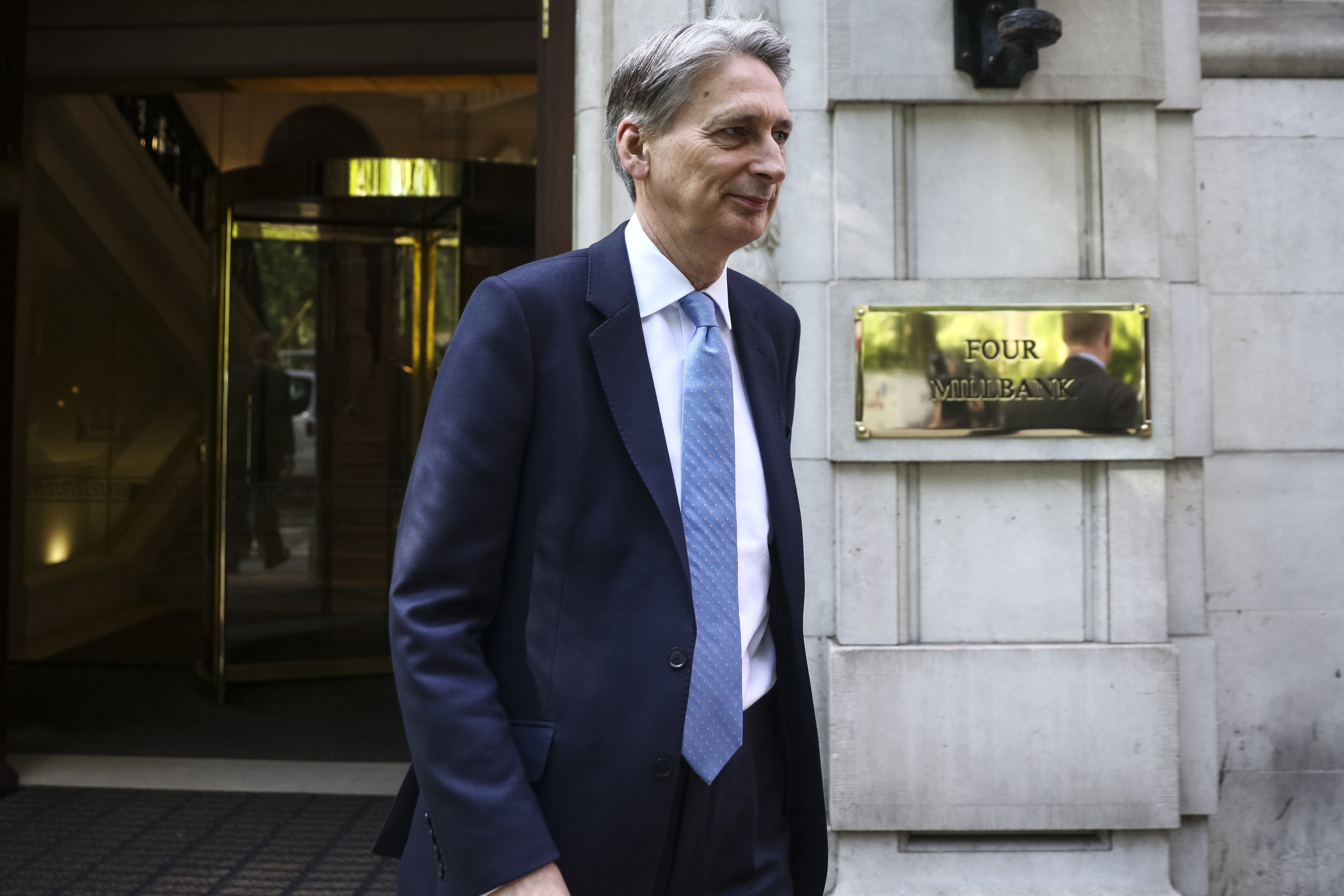
PHILIP HAMMOND has indicated he is ready to spend large sums to get Britain ready for a “no deal” Brexit, as it emerged that £250 million has already been allocated for EU withdrawal preparations.
The Chancellor said there was a “need for speed” from the other 27 EU nations in agreeing a transition to the post-Brexit era, both to deliver certainty for businesses and to avoid wasteful government spending on contingency planning.
Delays in beginning talks on the future UK/EU trading relationship – caused by Brussels’ insistence that the divorce deal must be settled first – were creating a “cloud of uncertainty” which was acting as a damper on the UK economy, he said.
Mr Hammond used an article in The Times to say that he was not yet ready to turn on the tap for spending on infrastructure, like lorry parks at Channel ports, which may be needed if the UK and EU fail to reach an agreement by the official Brexit date of March 2019.
Spending money now on Brexit preparations would divert cash away from priorities like the NHS, social care and education, and the investment may turn out to be unnecessary if talks in Brussels result in a good deal, he said.
But he later told MPs that the Treasury was “prepared to spend when we need to spend” on contingency plans for “no deal” outcomes including a possible “bad-tempered breakdown” in negotiations.
The Government would need to decide at some point what was the “realistic” worst case it needed to plan for, but it would wait until the “last point” before committing funds, he said.
It was “theoretically conceivable” that planes could be grounded at UK airports on day one of Brexit, though nobody “seriously believes that that is where we will get to”, he told the Commons Treasury Committee.
Theresa May told MPs at Prime Minister’s Questions in the Commons that £250 million has already been committed from Treasury reserves for Brexit preparations by government departments including environment, transport, the Home Office and HM Revenue & Customs during this financial year.
“We are preparing for every eventuality, we are committing money to prepare for Brexit, including a no-deal scenario,” the PM told MPs.
“Where money needs to be spent, it will be spent.”
The announcement was hailed as “great” by Suella Fernandes, chairwoman of the influential European Research Group of Brexit-backing MPs.
European Council president Donald Tusk indicated on Tuesday that he does not expect EU leaders to give a green light for the opening of talks on trade and transition at a crunch summit in Brussels next week, and suggested the move may even be delayed beyond the end of this year.
But Mr Hammond said businesses need certainty as soon as possible in order to make investment decisions and sign contracts covering periods after the official date of Brexit.
Early agreement would “avoid people having to make worst-case assumptions and acting on them in a way that would be damaging to their businesses, damaging to the UK economy, damaging to business partners in the other EU countries and damaging to the EU’s economy as a whole”, he said.
A transition period was a “wasting asset” which will lose its value the longer it takes to agree.
“Astonishingly”, work on the future relationship was under way in the UK but not on the EU side, even though there was “a high degree of consensus” in European capitals that agreement on transition arrangements was “a sensible thing to do and a practical thing to do”, he told MPs.
Mr Hammond urged EU leaders to allow “at least exploratory discussions” to begin, warning that progress on the kind of interim deal proposed by Theresa May in her speech last month in Florence would mean “breaking out” of the negotiation structure set out by the European Commission.
“Our European partners need to think very carefully about the need for speed in order to protect the potential value to all of us of having an interim period that protects our businesses and citizens and allows investment and normal business activity – contracting and so on – to carry on,” said Mr Hammond.
He made clear Britain was preparing for the possibility that no deal would be reached.
“We have to consider the possibility of a bad-tempered breakdown in negotiations where we have non-cooperation, or a worst-case scenario where people are not necessarily acting in their own economic self-interest,” he said.
Labour MP Wes Streeting, a leading supporter of the Open Britain campaign against a hard Brexit, said: “Philip Hammond’s heart isn’t in this because he, unlike many in his party, at least recognises the terrible risks and pitfalls Brexit has left this country vulnerable to.
“It’s time he and the Prime Minister showed some leadership, took on the hardliners on their backbenches, and reversed their damaging decision to leave the single market and the customs union.”

Enjoy the convenience of having The Sunday Post delivered as a digital ePaper straight to your smartphone, tablet or computer.
Subscribe for only £5.49 a month and enjoy all the benefits of the printed paper as a digital replica.
Subscribe